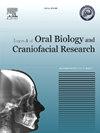探讨抗核抗体和类风湿因子相关性在预测女性Sjögren综合征和类风湿关节炎患者治疗结果中的预测能力
Q1 Medicine
Journal of oral biology and craniofacial research
Pub Date : 2025-02-11
DOI:10.1016/j.jobcr.2025.01.012
引用次数: 0
摘要
BackgroundSjögren综合征(SS)和类风湿关节炎(RA)是女性患者经常共存的自身免疫性疾病。生物标志物如抗核抗体(ANA)和类风湿因子(RF)被用于诊断,但它们对治疗结果的预测能力尚不清楚。本研究旨在探讨女性SS和RA患者年龄、ANA、RF与治疗反应的相关性。目的应用Pearson相关分析和神经网络模型,评价年龄、ANA、RF水平、RA(存在疾病)与治疗反应之间的关系,预测并发SS和RA患者的治疗结果。方法对56例30 ~ 73岁女性患者进行队列分析。描述性统计提供了关键变量的概述,随后进行Pearson相关分析以评估年龄、ANA、RF、RA和治疗反应之间的关系。我们建立了一个神经网络模型来预测基于年龄、ANA和RF水平的治疗反应,训练与测试的比值分别为81.3%和18.8%。结果Pearson相关分析显示,年龄与ANA水平呈显著正相关(r = 0.541, p = 0.031),但年龄、RF、RA与治疗反应无显著相关。神经网络模型在训练期间达到了92.3%的准确率,在大多数治疗类别的测试中达到了100%的准确率。然而,该模型难以准确区分某些类别,特别是治疗类别1和3。结论年龄与ANA水平有显著相关性,提示老年患者可能存在ANA升高。神经网络模型对治疗反应表现出很强的预测能力,尽管需要进一步改进以提高其区分所有反应类别的能力。这些发现表明,机器学习模型可以增强SS和RA患者的个性化治疗策略,但需要更大数据集的额外验证。本文章由计算机程序翻译,如有差异,请以英文原文为准。

Exploring the predictive power of antinuclear antibodies and Rheumatoid factor correlations in anticipating therapeutic outcomes for female patients with coexisting Sjögren's syndrome and Rheumatoid arthritis
Background
Sjögren's Syndrome (SS) and Rheumatoid Arthritis (RA) are autoimmune conditions that often coexist in female patients. Biomarkers such as antinuclear antibodies (ANA) and rheumatoid factor (RF) are used for diagnosis, but their predictive power for treatment outcomes remains unclear. This study aims to investigate the correlation between age, ANA, RF, and treatment response in female patients with both SS and RA.
Objective
To evaluate the relationships between age, ANA, RF levels, RA (disease present), and treatment response using Pearson correlation analysis and a neural network model, to predict treatment outcomes in patients with coexisting SS and RA.
Methods
A cohort of 56 female patients aged 30–73 was analyzed. Descriptive statistics provided an overview of key variables, followed by Pearson correlation analysis to assess relationships between age, ANA, RF, RA, and treatment response. A neural network model was developed to predict treatment response based on age, ANA, and RF levels, using a training-to-testing split of 81.3 % and 18.8 %, respectively.
Results
The Pearson correlation analysis revealed a significant positive correlation between age and ANA levels (r = .541, p = 0.031), though no significant correlations were found between age, RF, RA, and treatment response. The neural network model achieved an accuracy of 92.3 % during training and 100 % accuracy during testing for most treatment categories. However, the model struggled to accurately distinguish between certain classes, particularly treatment categories 1 and 3.
Conclusion
Age showed a significant correlation with ANA levels, indicating that older patients may have elevated ANA. The neural network model demonstrated strong predictive power for treatment response, although further refinement is needed to improve its ability to distinguish between all response categories. These findings suggest that machine learning models could enhance personalized treatment strategies for patients with SS and RA, but additional validation with larger datasets is required.
求助全文
通过发布文献求助,成功后即可免费获取论文全文。
去求助
来源期刊

Journal of oral biology and craniofacial research
Medicine-Otorhinolaryngology
CiteScore
4.90
自引率
0.00%
发文量
133
审稿时长
167 days
期刊介绍:
Journal of Oral Biology and Craniofacial Research (JOBCR)is the official journal of the Craniofacial Research Foundation (CRF). The journal aims to provide a common platform for both clinical and translational research and to promote interdisciplinary sciences in craniofacial region. JOBCR publishes content that includes diseases, injuries and defects in the head, neck, face, jaws and the hard and soft tissues of the mouth and jaws and face region; diagnosis and medical management of diseases specific to the orofacial tissues and of oral manifestations of systemic diseases; studies on identifying populations at risk of oral disease or in need of specific care, and comparing regional, environmental, social, and access similarities and differences in dental care between populations; diseases of the mouth and related structures like salivary glands, temporomandibular joints, facial muscles and perioral skin; biomedical engineering, tissue engineering and stem cells. The journal publishes reviews, commentaries, peer-reviewed original research articles, short communication, and case reports.
 求助内容:
求助内容: 应助结果提醒方式:
应助结果提醒方式:


